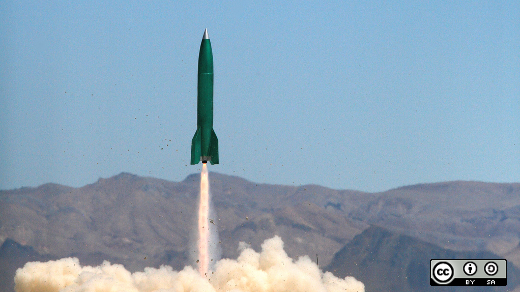I'm an avid hiker—at least, I play one in my mind. I love to hike and would enjoy nothing more than living closer to the mountains in East Tennessee. Hiking can be arduous. It can be tiring. It can be challenging.
And a journey toward greater openness is no different.
But to me, striving to become more open is less like a journey and more like a serious evolution. In my case, evolving to an open mindset has truly meant challenging my own mental models and norms. It has meant wrestling with tensions between how things have been done in the past with how they could be done differently in the future. It's an evolution that really begins (and continues to this day) with a decision to change and embrace what being open really means.
Classical conditioning
I like to say that I'm "classically trained" in business. I say this because some of my education and most of my work experience has involved command-and-control models of business. Despite this, for a long time, I've thought that how we teach and "do" business is broken. And over the years, I have remained frustrated with the mental models we use to imagine how business works.
In 2012, I began to piece together my thoughts on what would eventually become my version of The Open Organization, a book that was designed to start the conversation on how to develop an open organization.
Through years of research, I discovered that this thing called "open" has many colors and flavors. It comes in many shapes and sizes. One challenge to adapting open concepts to established business models is the struggle to change popular mental models of leadership and management: Since there is no one-size-fits-all approach to business, giving classically trained business leaders every single tool for "going open" is in fact rather difficult—because an exhaustive list of those skills just doesn't exist. Nevertheless, I'm very much an evangelist for openness in the workplace.
Evolving toward openness means accepting the tensions that arise when we try to live according to open values like collaboration, accountability, and transparency. Through a good deal of introspection, however, these became my watchwords. And yet achieving mental change also requires adopting new technological skills
A better way
Individuals considering how to evolve into open leaders or managers: You will need to change the way you view and interact with technology. For me, that has meant embracing Internet Relay Chat (IRC), video conferencing, Slack, and GoogleDocs as methods for communicating and collaborating with colleagues both near and far. It has also pushed me toward a decision that has been long coming: the decision to cut strings with the status quo and embrace open technology to the fullest.
That move began with adopting the Firefox web browser exclusively in 2004 (since then, I find myself moving between Firefox and Chrome). More recently, I found the open source LibreOffice Writer as a replacement for Microsoft Word. And this discovery came about through a discussion on switching entirely to a Linux-based operating system, which I am currently in the process of doing.
Am I scared? Yes, I have to admit I am (I've been using Microsoft Windows since version 3!). But I am also very excited—and hopeful—for this new step toward embracing open principles and open technology to their fullest—toward breaking away from "they way we always do it" and embracing a "better way of doing it."
I'm not naive. I know there will be challenges along the way. I know this won't always be easy. What I do know is that when you evolve toward open, everything starts working better. While open is so much more than one article can possibly explain, I can say I'm loving the journey I'm on.
I look forward to sharing it with you.
This is the first installment of "An Open Evolution," Dr. Philip Foster's new column for Opensource.com.






9 Comments